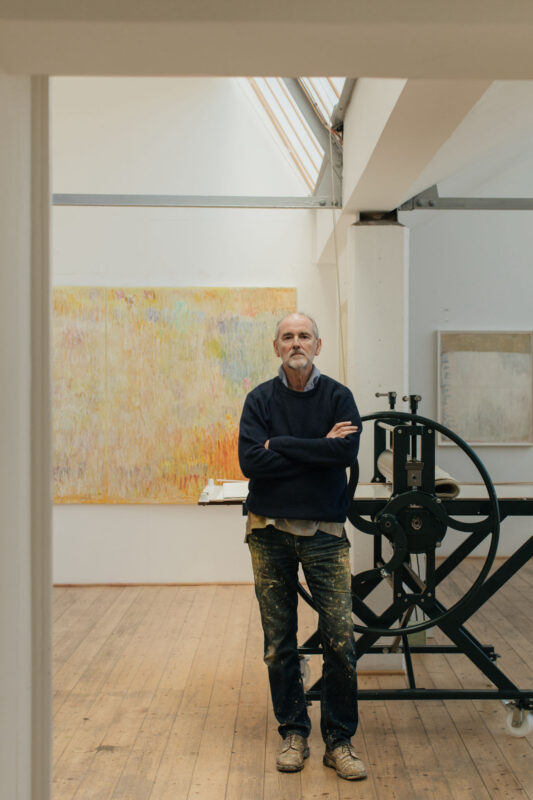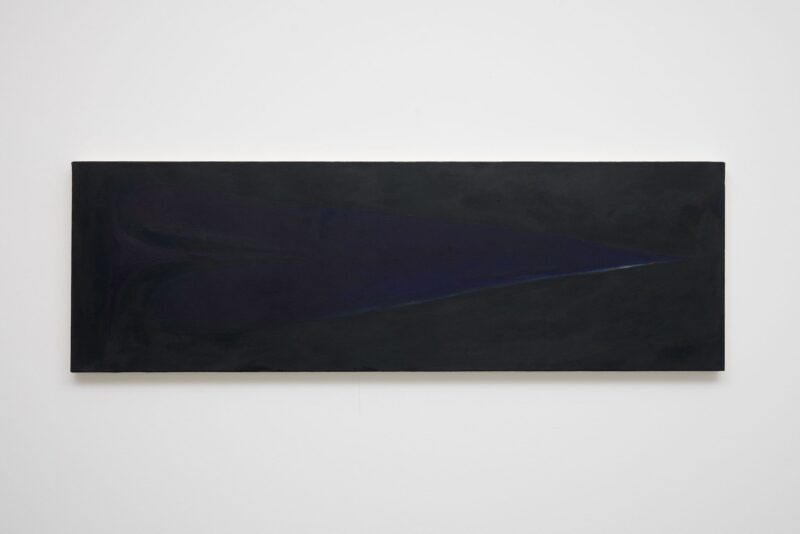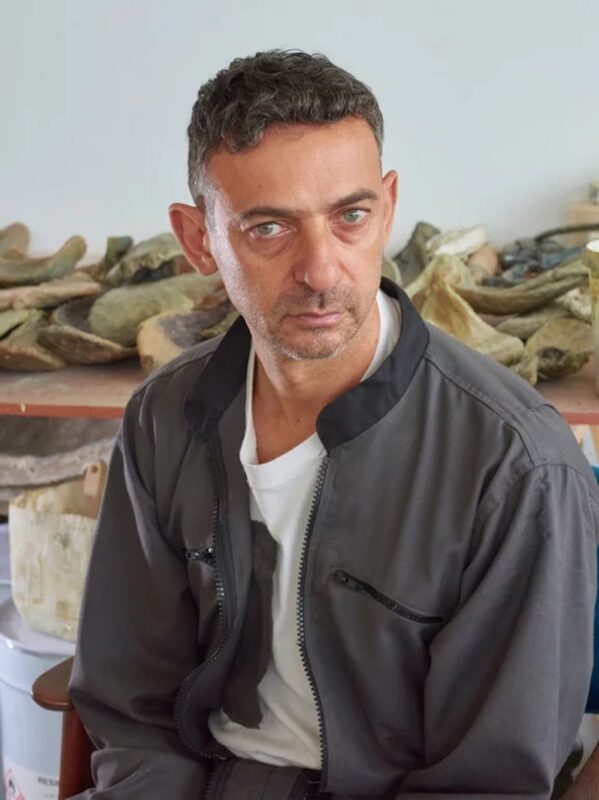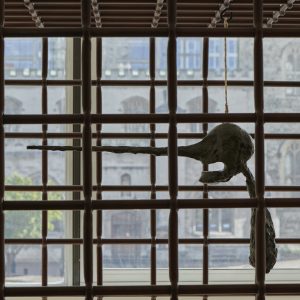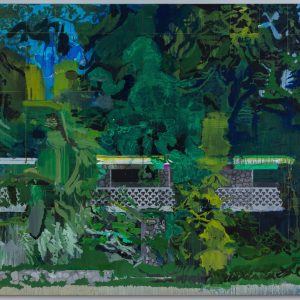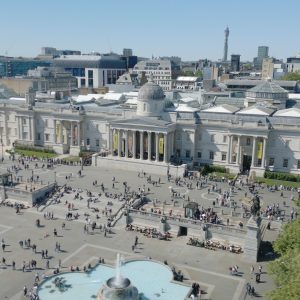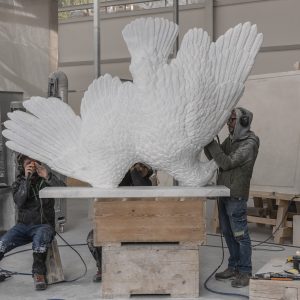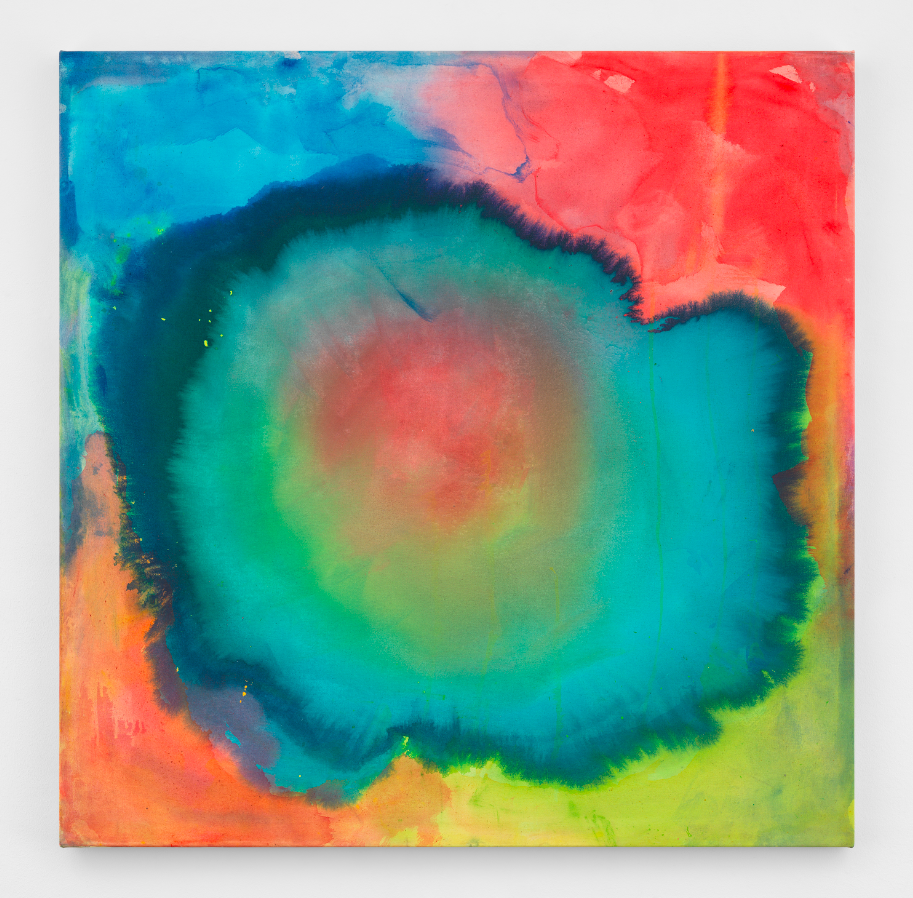
Vivian Springford at Almine Rech is only the artist’s second solo show; The opening exhibition was in 2018 when Almine Rech Gallery first began to represent Springford’s estate. Fast forward two years, (thanks to Almine Rech Gallery’s unwavering commitment to Springford and her work) the American colour field painter is becoming more well-known than ever. This is good progress but there is still work to be done. Compared to other abstract expressionist artists of her time, Springford remains incredibly underappreciated. While this keeps her prices comparatively reasonable, Springford deserves the chance to be valued in the same way as her male, and occasionally female, counterparts (Mark Rothko, Helen Frankenthaller, Robert Motherwell, and Morris Louis– to name a few.)
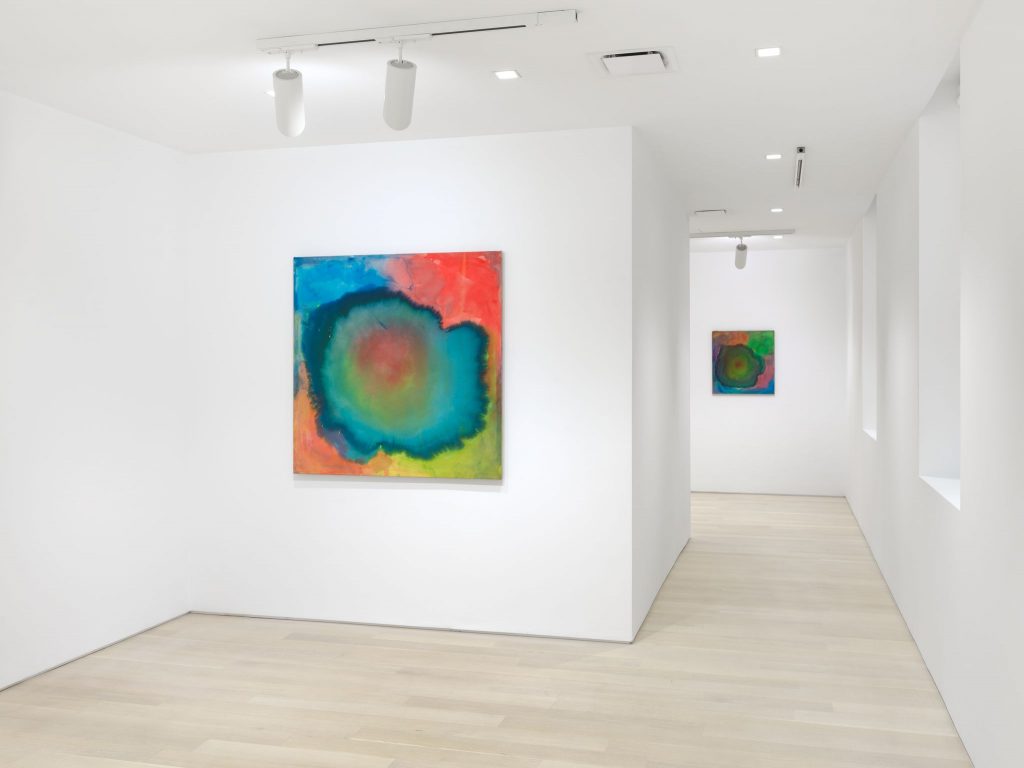
Installation views of Vivian Springford, Almine Rech New York, November 13, 2020 – January 13, 2021Courtesy Almine Rech. Photography by: Dan Bradica
The artist was already financially secure, as she came from an affluent family, so she didn’t need to sell her work to make a living. This easily could have led to her work’s lack of visibility as she never pushed people to buy, or even evaluate, her painting. Most of the works in this exhibition, also, are from the 1970’s, and at that point, the artist had begun to lead what would soon become a lonely and reclusive life. Springford continued to paint as she grew older, but her self-isolation only intensified as her vision deteriorated. Macular Degeneration and a lack of immediate family made it increasingly difficult for Springford to even leave her flat, let alone paint. The condition worsened and finally left her legally blind. Springford’s character was defined by being an artist, and by her deeply personal connection to painting, making this sad end to her story all the more heartbreaking.
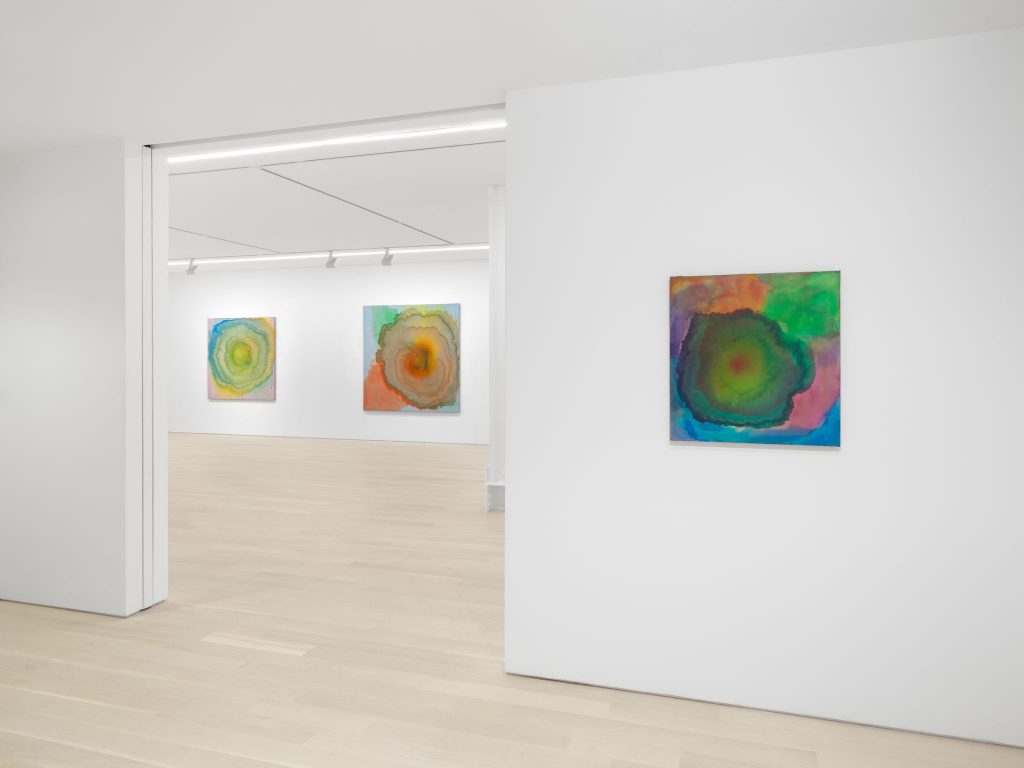
Before Almine Rech Gallery took over representation, the artist had had something like five or six (at best) solo exhibitions for decades. It is commonly thought that the famous art critic, Harold Rosenberg, championed Springford and facilitated said exhibitions as a favour to her family. I am not completely sold on that theory, though, because Springford made it clear that she would not use her family’s affluence or contacts to gain exposure and fame in the art world. In the meantime, her work’s lack of proper recognition in no way detered Springford from honing her skills as a painter. Even when her work wasn’t displayed, she remained committed to creation, and to her life as an artist. Early in her career, (mid 1950’s) Springford met Asian- American painter Walasse Ting and the pair decided to share a studio space; She helped the artist translate his poetry and he taught her about his foreign culture and its’ art. Springford was so inspired and intrigued by Ting, in fact, that Chinese calligraphy came to strongly influence much of her early abstract work. Springford and Ting’s relationship progressed, and the friends, partners, and lovers would go on to share the studio space for ten years. Ting ran in certain creative circles and befriended other well-known artists such as Sam Francis and Karel Appel. Through Ting, Springford was introduced to this artistic clan and also became close friends with the group—she had officially gained entrance into the exclusively avante- garde family.
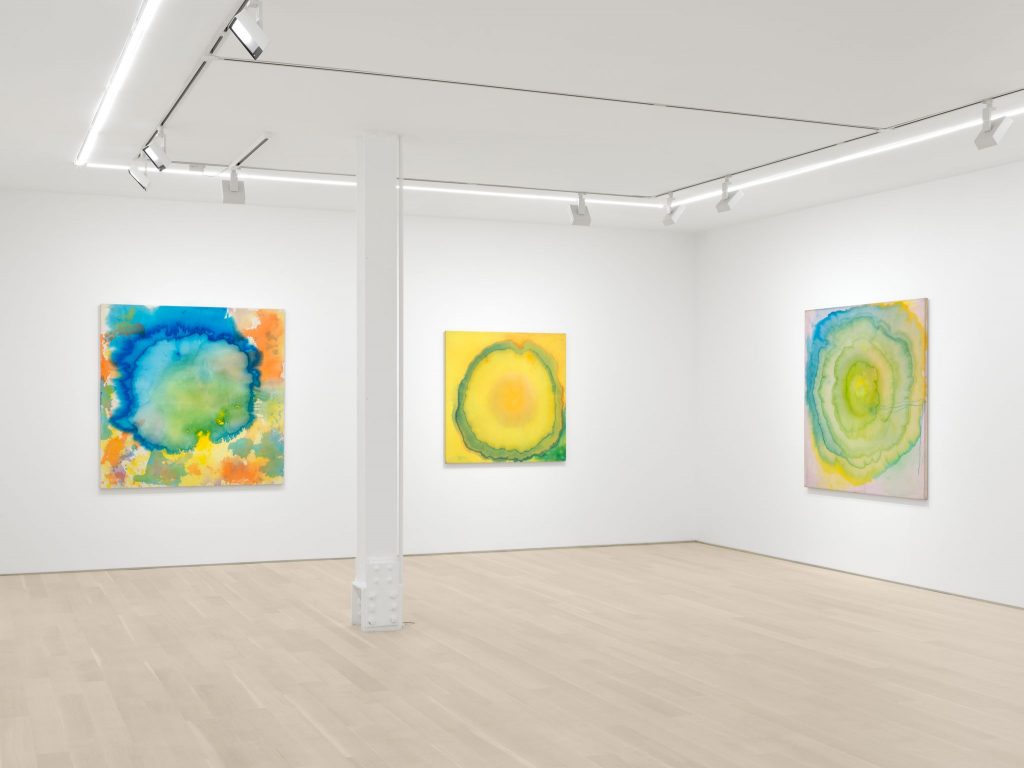
Springford’s affiliation for “la vie boheme” probably came as a surprise to her prominent, and conservative, parents. Her family’s wealth and social standing had guaranteed Springford admittance to the prestigious Spence School in New York City, and promised the inclusion of her picture in the The New York Times “Debutantes of the Winter Season in New York” in 1932. When she graduated from The Spence School, however, Springford began to direct her own course and went straight to study at The Art Students League. This marked the true inception of her career. Though Springford is known for her abstract paintings, she actually began as a portraiture artist and continued with this genre for a number of years. Then Springford moved on to abstract expressionism and finally, of course, colour field painting.
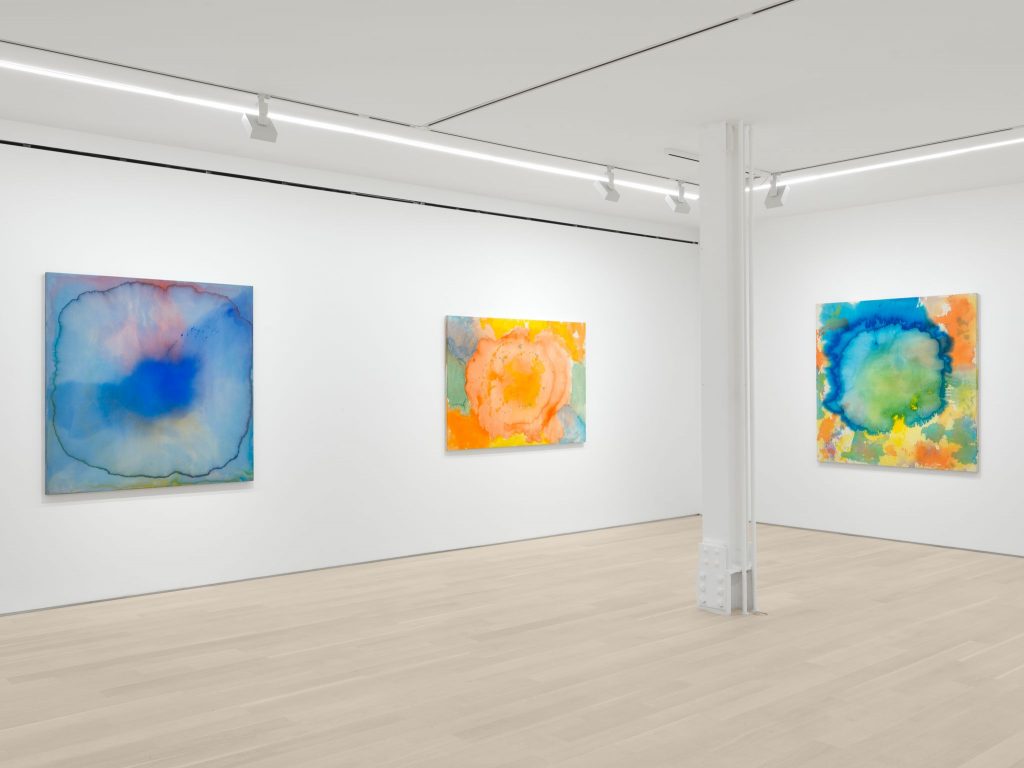
Springford was clearly influenced by other abstract artists of her time, specifically Helen Frankenthaler. If you know Frankenthaler’s work, the similarities are quite clear. Both painters used the same technique (which Frankenthaler is now known for) to make the famous soak stain paintings. But, again, if you know Frankenthaler’s work, it’s obvious that this process did not define her painting the way it did Springford’s. This artistic method may look, and sound, simplistic. And, if you’re close enough to a painting you may be able to trace each colours path, pinpointing exactly where various pigments come together and then diverge. A façade of simplicity contributes to the artwork’s allure—each composition is striking, the colours are pastel and pretty (reminding us of easter eggs?), and there seems to be no sad, complex story underneath it all—what more could we want? I hate to break it to you, but this is not the case.
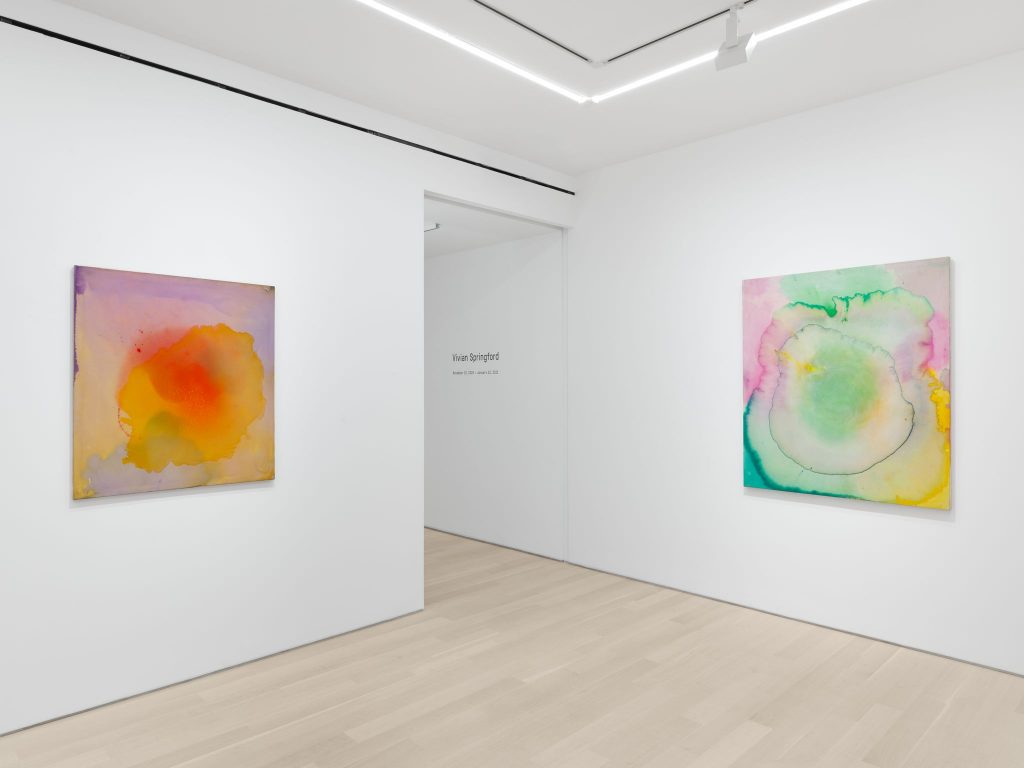
The process, in reality, is not simple, nor is it easy; It takes serious ability, along with concentration, time, and focus, to evoke the desired effect. Thus, this sizeable exhibition (eighteen paintings) is a testament to Springford’s talent. Each work emphasizes a new variation of colour palette, and areas of denser or more spread out pigment. Swirls of cotton candy coloured canvases are carefully spaced throughout the two main rooms, and in the hallway. These softer paintings are skillfully juxtaposed with deep and rich collections of primary colours, highlighting a purposefully stark contrast. Simultaneously the bold curation plays with the importance of scale, proving that each painting’s size represents much more than how much space it takes up. I knew scale was important, but perhaps I didn’t realize how important, until I walked into the last room of the exhibition. The expansive works surround what becomes an utterly nondescript, and empty, middle space. The size of each painting is impressive, but not intimidating; This imperative balance is held on to tightly, allowing the vast spectrum of colour to warmly welcome a visitor in.
Springford’s work is undeniably aesthetically pleasing. In fact, many of the paintings have already sold, just within the last few short weeks, the show has been open. The exhibition takes advantage of each paintings objective beauty but doesn’t stop there. The paintings individually hold certain pieces of Springford’s story—isolation, loneliness, creativity, complexity, vibrance etc. And at the same time, the colours come together in such a way that gives each work permission to exude its inherent, simplistic, and almost childlike happiness. The exhibition is so successful because it allows the various descriptions of Springford’s work to coexist. Sure, each painting’s innate beauty is put on display, some may even say its exploited, but this is not in vain as the show’s curation is devoted to highlighting each picture’s deeper and more complex traits. Finally the radiating, multicoloured, stained canvases are beginning to inhabit the type of important and public spaces which they have been left out of for so long. The viewer escapes New York City’s dark and cold streets, into a sensual and warm haven of colourful escape. All the while, they are being made to recognize that Springford’s personal and professional narrative runs much deeper than the pretty pastel surfaces of her paintings. Springford’s artistic ability, combined with her largely overlooked talent and personal history makes for a story that begs to be further unearthed and at last celebrated. I could be wrong, but something tells me that Springford’s name, and her work, won’t exist under the radar for much longer.
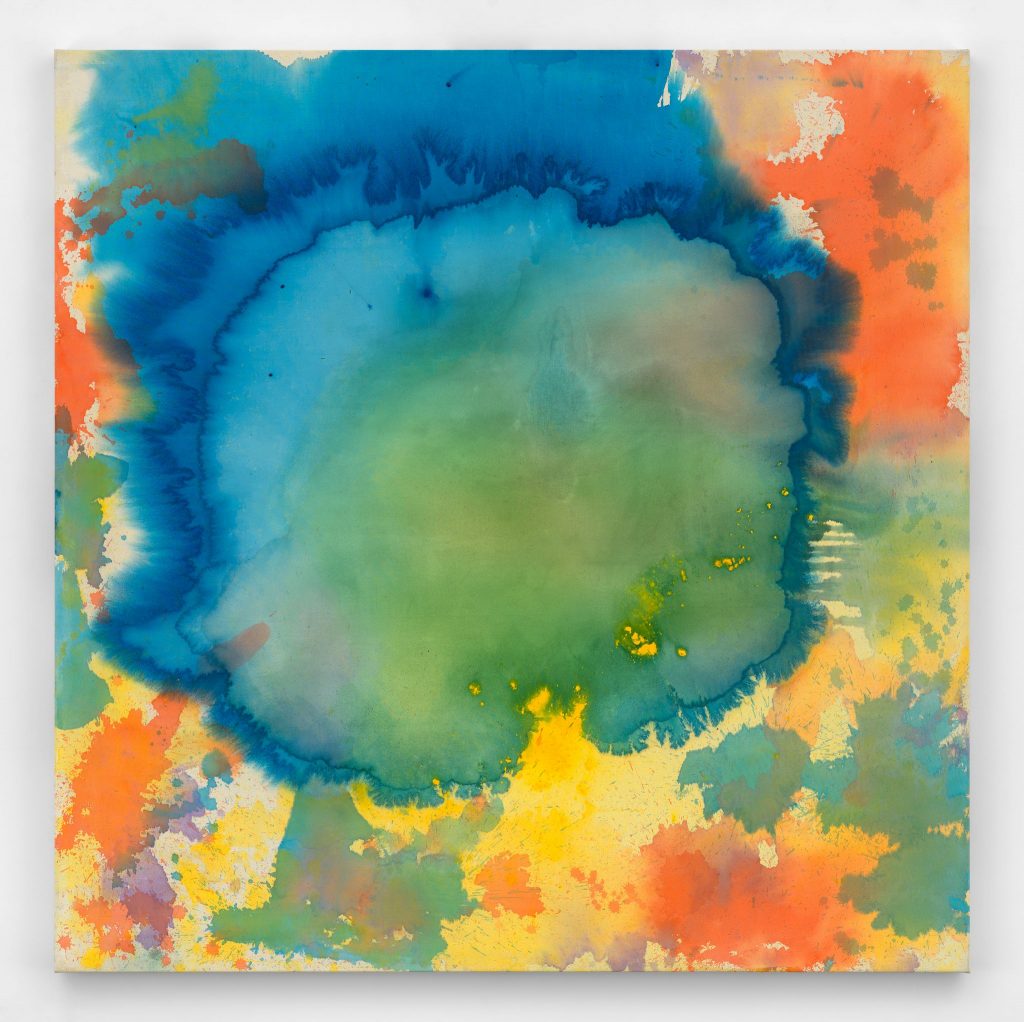
Vivian Springford — January 13th, 2021 Almine Rech New York
